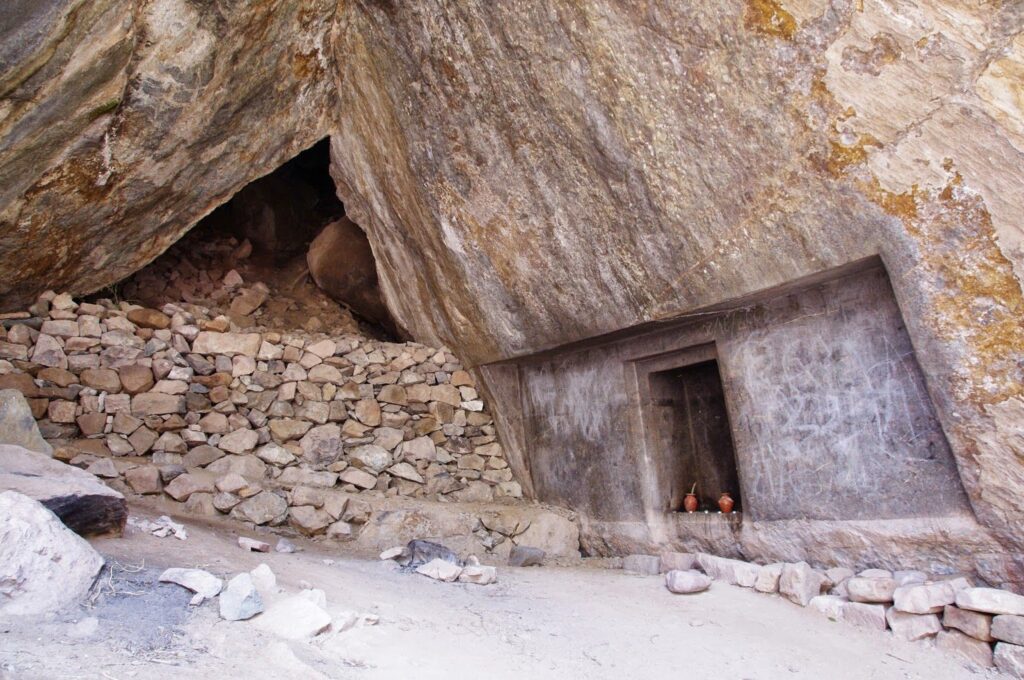The Mysterious Cave of Naupa Huaca: The Laser Cut Megalithic Structure

Located in the vicinity of one of the most enigmatic megalithic sites in Perù, Ollantaytambo, Naupa Huaca is a cave that hosts some mysterious megalithic features, like “laser cut” andesite (one of the hardest stones in the world) and intricate motifs cut right through it.
This megalithic structure, often overshadowed by more famous sites like Machu Picchu, captivates archaeologists and travelers alike with its unique architecture and enigmatic history. In this article, we’ll explore the origins, purpose, and ongoing mysteries of Naupa Huaca.

Naupa Huaca, which translates to “Place of the Ancestors” in Quechua, is believed to date back to the pre-Inca period. This megalithic site is situated in the mountainous region of the Apurímac River, surrounded by dramatic landscapes that have witnessed the passage of time.
The structure is composed of large, precisely cut stone blocks, some weighing several tons. The craftsmanship suggests a high level of architectural knowledge and social organization. However, unlike other well-documented archaeological sites, Naupa Huaca has remained somewhat elusive in terms of its exact purpose and the culture that constructed it.
Architectural Features

The architecture of Naupa Huaca is particularly intriguing. The site consists of several platforms and terraces built into the hillside, with large stone walls that exhibit remarkable engineering skills. The alignment of the structures suggests they may have been oriented toward celestial events, pointing to a deep understanding of astronomy among the builders.
One of the most striking features of Naupa Huaca is its monolithic stones, meticulously placed to create a sense of harmony with the surrounding landscape. The precision of the stonework raises questions about the tools and techniques available to the ancient builders, leading to various theories about their methods.

Theories and Speculations
While much remains unknown about Naupa Huaca, several theories have emerged regarding its purpose. Some researchers propose that it served as a ceremonial site, potentially for rituals linked to agricultural cycles or astronomical events. The site’s elevated position may have made it an ideal location for observing celestial bodies, reinforcing its significance in ancient cosmology.
Another theory suggests that Naupa Huaca could have been a strategic lookout point, providing visibility over trade routes and settlements in the region. The strategic placement of the structure allows for surveillance of the surrounding valley, hinting at its possible role in the socio-political dynamics of the time.
Ongoing Research and Discoveries
Despite its historical significance, Naupa Huaca has not been extensively excavated or studied compared to other archaeological sites in Peru. Recent interest in the site has led to new research initiatives aimed at uncovering its mysteries. Archaeologists are employing modern technologies, such as LiDAR and ground-penetrating radar, to map the area and identify potential hidden structures.
Naupa Huaca remains an enigmatic gem in the heart of the Andes, inviting exploration and speculation. As research continues and new discoveries are made, this ancient structure has the potential to reveal more about the lives of its builders and their connection to the cosmos.
